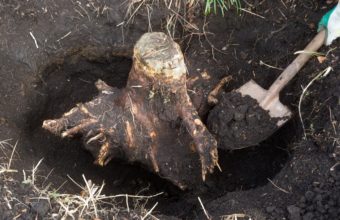When pruning or trimming a tree, it’s important to make cuts in the right locations to promote the tree’s health and healing.
The best places to trim a tree are…
- Outside the Branch Collar – The branch collar is a slightly swollen area where a branch attaches to the trunk. The best place to make a cut is just outside the branch collar. The branch collar contains specialized cells that aid in the healing process.
- Avoid Flush Cuts – Avoid making cuts flush with the trunk, as this removes the protective branch collar. Flush cuts can impede the tree’s ability to compartmentalize the wound and increase the risk of decay.
- Avoid Leaving Stubs – Similarly, avoid leaving stubs when pruning. Stubs take longer to heal, and the resulting wounds are more susceptible to pests and diseases.
- Use the Three-Cut Technique for Larger Branches:
- Undercut: Make an undercut about 6-12 inches away from the trunk. Cut upward about one-third of the way through the branch.
- Top Cut: Make a top cut slightly further out from the undercut, and allow the branch to fall.
- Final Cut: Make the final cut just outside the branch collar to remove the remaining stub.
- Diagonal Cut – When making cuts on smaller branches, a slight diagonal cut is often recommended. This helps shed water away from the cut surface, reducing the risk of water accumulation and potential decay.
- Clean and Sharp Tools – Always use clean and sharp pruning tools to make precise cuts. Dull or dirty tools can create ragged cuts that may be slow to heal and increase the risk of disease.
- Avoid Topping – Avoid making cuts that involve topping, which is the severe reduction of the tree’s height by removing large portions of the crown. Topping is harmful and can lead to various issues, including weak regrowth and increased susceptibility to pests and diseases.
By making proper cuts just outside the branch collar, you promote faster healing and reduce the risk of long-term damage to the tree. Pruning should be done thoughtfully, and it’s often beneficial to consult with a certified arborist or tree care professional for guidance, especially when dealing with larger branches or more extensive pruning needs.






